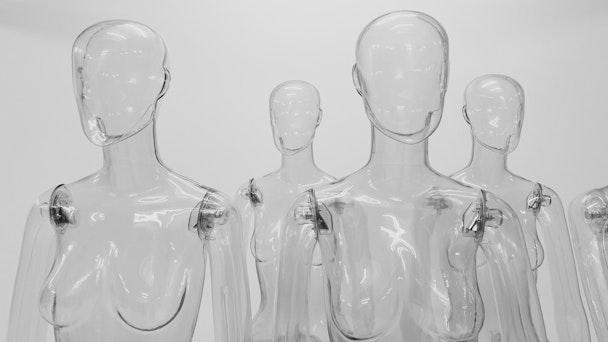Haptic priming and mirror neurons: use real science to transform your CX
Simon Collister is the director of Unlimited’s Human Understanding Lab. With a PhD in digital communications, he knows a thing or two about optimizing digital experiences. Here, he tells us the essentials for ensuring that your customer experience (CX) offering is tailored to what people actually think, feel and do (not just what you imagine).

Unlimited’s Simon Collister on how to fill out your understanding of consumer behavior with real science / Anh Tuan To via Unsplash
Brands achieve a competitive advantage by creating powerful fully optimized and personalized CX that creates deep bonds with consumers.
But there’s a catch. The new CX landscape is complex.
Media and marketing touchpoints are fragmented. Brands are experienced through an ecosystem of platforms and devices, not single channels. Customer journeys are highly personalized, and pathways to purchase are becoming more and more compressed.
To succeed in today’s tech-driven, low-attention world, brands must understand and respond to the one part of this world that has remained constant: humans.
Don’t forget the ‘why’
But this requires more than just data science and a cutting-edge tech-stack. Don’t get me wrong, data science is vital for orchestrating CX. It gives us a view of the ‘who, what, where, when’ of customer behavior.
But as more and more of the brand and consumer journey becomes digitized, we need to start taking a multi-dimensional approach to understanding consumers’ wants, needs and intentions. This is where neuroscience and behavioral psychology come in: they help take us further by giving us the ‘why.’
Putting neuroscience at the heart of CX
Consumers are four times more likely to purchase a product they pick up; 50% feel more emotionally elevated when touching a product. Optimizing senses by making experiences multi-sensory can drive sales increases by up to 10%.
We call this ‘haptic priming’ and it’s great in physical environments. But we can apply this neuro-trigger in digital experiences too by tapping into the brain’s ‘mirror neurons,’ which let us infer similar feelings to those of a person we see.
Using creative assets that dial up depictions of senses can trigger the same emotions and feelings of desire as if the consumer were experiencing the sensation themselves.
So, brands should build creative assets that show customers engaging sensorily with products or services. Showing consumers touching a new car or being able to see someone applying make-up even in digital content can create a mirrored response in the brains of online viewers. This creates an emotional uplift – and ‘primes’ them to make a decision.
(Really) understanding decision-making
Using the neuroscience technique of reaction time testing (RTT), we can identify the real subconscious triggers that influence consumers’ decisions.
RTT tells us how strong a consumer’s emotional connection is with a particular trigger by measuring the speed of their reaction. This means that we can understand what qualities of a brand, product or service are the ones people say are important, as well as the ones they ‘feel’ are important. It’s these triggers that we need to dial up in our creative, messaging or CTAs as they’re ones that have the greatest influence on decision-making and behavior.
We know from extensive benchmarking that creative concepts or messages scoring 40% or higher on reaction speed will be in the top 25% of best-performing assets. So, neuroscience can also indicate which triggers are likely to be the most effective at moving consumers through the experience journey.
Nudging consumers with behavioral science to optimize experiences
It’s not just neuroscience techniques that help us optimize CX.
Behavioral science provides us with universal learnings about the way people think, feel and act. In addition to creating emotional connections and dialing up subconscious motivations, we must ‘frame’ each customer’s interaction to create a positive experience. We must also use the right people to influence behavior – this could be individual celebrities or peers to leverage social biases. Finally, we must consider the ‘flow’ of CX by making the digital or physical infrastructure easy to use.
For example, using our own behavioral ‘shortcuts’ framework, we optimized a financial services company’s CRM content to nudge consumers into optimal actions. We analyzed the specific optimizable ‘moment’ in the CX by reviewing the gap between the brand’s values and tone of voice, and what it wanted to achieve at that point on the customer journey.
Using these insights, we developed new content using ideas from semiotics – colors and symbols to highlight important information to capture customers’ attention. We re-framed messages around consumers’ needs and restructured the content layout by ‘chunking,’ i.e. arranging key messages in easy-to-find locations. The results demonstrably improved metrics, increasing comprehension by x1.7 and relevance by x1.5.
What brands can learn from neuroscience and behavioral science
In this data-driven world it’s worth remembering the words of legendary creative director Bill Bernbach, who reminds us that while it’s always been fashionable to talk about change, it took millions of years for our instincts to develop, and so we shouldn’t overlook the unchanging nature of behavior.
This is where neuroscience and behavioral science comes into play. Understanding how humans really think, feel and act will enable us to create the most powerful and effective CX.
Content by The Drum Network member:

UNLIMITED
UNLIMITED is the UK’s leading conversion agency. Our mission is to create genuine business advantage for clients, and we do this by uncovering behaviour-led insights...
Find out more
